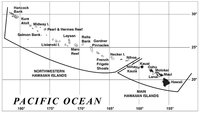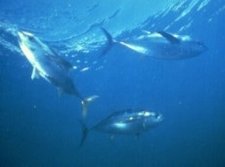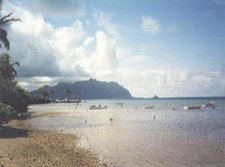Insular Pacific-Hawaiian large marine ecosystem
Contents
- 1 Introduction Location of the Insular Pacific-Hawaiian Large Marine Ecosystem. (Source: NOAA (Insular Pacific-Hawaiian large marine ecosystem) )
- 2 Productivity
- 3 Fish and Fisheries
- 4 Pollution and Ecosystem Health
- 5 Socioeconomic Conditions
- 6 Governance
- 7 References
- 7.1 Articles and LME VolumesFAO, 2003. Trends in oceanic captures and clustering of large marine ecosystems—2 studies based on the FAO capture database. FAO fisheries technical paper 435. 71 pages.Morgan, Joseph. 1989. Large marine ecosystems in the Pacific Ocean. In K. Sherman, L.M. Alexander, and B.D. Gold, eds. Biomass Yields and Geography of Large Marine Ecosystems. AAAS Selected Symposium 111. Westview Press. Boulder CO. 377-394. ISBN: 0813378443 (Insular Pacific-Hawaiian large marine ecosystem) . * NOAA, 1999. Our living oceans—report on the status of U.S. Living Marine Resources. 301 pages. NOAA, 2002. Large Marine Ecosystems of the World.
- 7.2 Other References
- 7.3 Citation
Introduction Location of the Insular Pacific-Hawaiian Large Marine Ecosystem. (Source: NOAA (Insular Pacific-Hawaiian large marine ecosystem) )
The Insular Pacific-Hawaiian Large Marine Ecosystem (LME) is characterized by its tropical climate. This Large Marine Ecosystem includes the main Hawaiian Islands of Hawaii, Maui, Lanai, Molokai, Oahu, Kauai, and Niihau, as well as the outer northwest islands and their near-shore boundaries. The region is influenced by equatorial currents (see NOAA, 2002) and predominant northeasterly trade winds. The Hawaiian Islands were formed by successive periods of volcanic activity, and are surrounded by coral reefs. Ocean surface temperatures range from 21 degrees Celsius (oC) to 29oC. For more information on environmental conditions influencing the Hawaiian Islands (climate, temperature, salinity, waves, currents and tides), see the Ocean Atlas of Hawaii. NOAA’s Western Pacific Region includes the Hawaiian Islands and the US affiliated islands of American Samoa, Guam and the Northern Marianas (see NOAA, 1999).
Productivity
 The Insular Pacific-Hawaiian Large Marine Ecosystem. (Source: NOAA)
The Insular Pacific-Hawaiian Large Marine Ecosystem. (Source: NOAA) The LME waters have a high diversity of marine species however relatively low sustainable yields due to limited ocean nutrients (see NOAA, 1999). The Insular Pacific-Hawaiian LME is a Class III, low productivity (<150 gC/m2-yr), ecosystem according to SeaWiFS global productivity estimates. The LME has a high percentage of endemic species: about 18%-25% of the LME’s shore fishes, mollusks, polychaete worms, seastars, and algae exist only in the Insular Pacific-Hawaiian LME. It is an important habitat for the North Pacific humpback whale. The LME’s important algal habitats and coral reef ecosystems are used by a variety of organisms for food, shelter, and nursery grounds. For detailed information on coral reefs in this LME, see data collected by the University of British Columbia Fisheries Center. The United States Geological Survey (USGS) studies the relationships between Hawaiian reef fish assemblages and their coral reef habitat. NOAA's Climate Studies Group discusses decadal changes in the oceanic productivity of this LME.
Fish and Fisheries
 Tuna. (Source: NOAA)
Tuna. (Source: NOAA) Most fisheries (bottomfishes, nearshore reef fishes, and invertebrates) are concentrated in the coastal waters of the narrow shelf areas surrounding the islands but there is a highly migratory pelagic fishery as well (see NOAA, 1999 for more information). Tuna (bigeye, yellowfin, skipjack, albacore) is the LME’s most valuable resource. Transboundary fisheries resources have importance and value to the Pacific rim nations, and to the US fleets fishing within and beyond the USA’s Exclusive Economic Zone (EEZ). The magnitude of fisheries in this LME is relatively small when compared to larger mainland fisheries (see NOAA, 1999, table 9). The Food and Agriculture Organization (FAO) catch trends (1990-1999) show an increase from 50,000 tons in 1990 to 70,000 tons in 1999 (see FAO, 2003). For a graph of bottomfish landings, see NOAA, 1999, p. 190. For Hawaiian lobster landings, see NOAA, 1999, p. 184. Spiny and slipper lobsters are both harvested, with spiny lobster as the primary target. Evidence that slipper lobsters have taken over certain areas previously defined as spiny lobster [[habitat]s] might indicate an increase in abundance and spatial distribution of slipper lobsters. Statistics for 1983-1997 showed a continuing decline in lobster landings. The fishery was closed in 1993 and the seasons were shortened in 1994 and 1995. A management plan was implemented in 1983, with amendments to the plan designed to eliminate lobster trap interactions with the endangered (IUCN Red List Criteria for Endangered) Hawaiian monk seal. See Appendix 2 in NOAA, 1999 for fishery management plans. Coral reefs were also managed under a plan implemented in 1983. Bottomfish recruitment varies in this LME, with a decline in landings and a steady decline in CPUE since 1948 (see NOAA, 1999, p. 191). To determine whether the causes are environmental, biotic (e.g. habitat and competition), or anthropogenic would require more catch data, accurate assessments and research. The Western Pacific Fishery Management Council manages fisheries in this LME. The University of British Columbia Fisheries Center has detailed fish catch statistics for this LME. The key issues in Hawaiian fisheries are: (l) management efforts for highly migratory species, (2) shark finning, and longline fishing interactions with (3) sea turtles, and (4) seabirds. NOAA's National Marine Fisheries Service Honolulu Laboratory has extensive data on Hawaiian fisheries.
Pollution and Ecosystem Health
 Hawaiian beach. (Source: NOAA)
Hawaiian beach. (Source: NOAA) For a chapter on marine mammals of the US Pacific Region and Hawaii, see NOAA, 1999. This provides figures for Hawaii of the Hawaiian monk seal, and various species of dolphins and whales. Mammals are possible indicators of ecosystem health. This LME does not have a comprehensive coastal monitoring program. Hawaii’s sampling effort in estuaries is focused on known areas of concern only (see EPA, 2001). Surveys planned in the future will provide a better sense of estuarine conditions. The primary causes of estuarine impairment are increased concentrations of suspended solids and nutrients. For information on the Kaneohe Bay coral reef system, data on water column and sediments, chlorophyll and nutrients, see www.hawaii.edu/cisnet. Kaneohe Bay is the focus of a long term project to monitor water quality and sediment processes. There is an ongoing Hawaii Coral Reef Assessment and Monitoring Program (CRAMP). Coral reef ecosystems are biologically critical to this LME, but are being impacted by areas of intensified human activity. This is resulting in sedimentation, eutrophication, and pollution. A question needing further study is the effect on fish habitat of the harvesting of precious corals. Some habitat-destructive fishing techniques are coral tangle-netting and dredging.
Socioeconomic Conditions
Hawaiian's have traditionally used the LME for fishing, aquaculture, trade, transportation, and communication. Coral reef ecosystems and fisheries have major cultural and economic importance. Fisheries are partially artisanal and geared towards subsistence while a portion is focused towards large pelagic species for profit. Aquaculture is an important historical use of the marine environment. The diversity of water supplies of different temperatures allows the culture of almost all aquaculture species all year: tropical fish, trout, salmon, carp, milkfish, mullet, mahimahi, shrimp, seaweeds, and shellfish. The rate of species extinction has accelerated with the arrival of the Polynesians followed by the arrival of the Europeans in the late 1700's. See Bishop Museum for information on [[endangered (IUCN Red List Criteria for Endangered)] species].
Governance
This LME is governed by the USA and by the State of Hawaii. The Western Pacific Regional Fishery Management Council manages fisheries in this LME. The Western Pacific Fisheries Coalition is a collaboration between conservationists and fishermen to promote the protection and responsible use of marine resources through education and advocacy. There is a need for more involvement of the native Hawaiian community. Pacific whales are protected under the International Whaling Commission (IWC), which prohibits non-subsistence hunting by member nations. In the USA, humpback whales are classified as an endangered species under the U.S. Endangered Species Act. A Hawaiian Islands Humpback Whale National Marine Sanctuary]] was designated in 1992. The Hawaiian Islands National Marine Sanctuary Act aims to protect humpback whales and their habitat within the sanctuary, and to educate the public on the relationship of humpback whales with the Hawaiian Islands marine environment. It manages human uses within the sanctuary.
References
Articles and LME VolumesFAO, 2003. Trends in oceanic captures and clustering of large marine ecosystems—2 studies based on the FAO capture database. FAO fisheries technical paper 435. 71 pages.Morgan, Joseph. 1989. Large marine ecosystems in the Pacific Ocean. In K. Sherman, L.M. Alexander, and B.D. Gold, eds. Biomass Yields and Geography of Large Marine Ecosystems. AAAS Selected Symposium 111. Westview Press. Boulder CO. 377-394. ISBN: 0813378443 (Insular Pacific-Hawaiian large marine ecosystem) . * NOAA, 1999. Our living oceans—report on the status of U.S. Living Marine Resources. 301 pages. NOAA, 2002. Large Marine Ecosystems of the World.
Other References
- Eldredge, L. G. and J. T. Carlton, 2002. Hawaiian Marine Bioinvasions: A Preliminary Assessment. Pacific Science, 56(2), pp. 211-212.
- Farewell, T. E. and A. C. Ostrowski, 2001. The status and future of private offshore aquaculture in Hawaii and the U.S. islands. Conference: Aquaculture 2001, Lake Buena Vista, FL (USA), 21-25 Jan 2001. Book of Abstracts, World Aquaculture Society, 218.
- Hutchins, P. A., R. W. Hilliard, and S. L. Coles, 2002. Species Introductions and Potential for Marine Pest Invasions into Tropical Marine Communities, with Special Reference to the Indo-Pacific. Pacific Science, 56(2), pp. 223-233.
- Ocean Atlas of Hawaii.
- Jameson, S. C., M. V. Erdmann, G. R. Gibson, Jr. and K. W. Potts, 1998. Development of Biological Criteria for Coral Reef Ecosystem Assessment. For the United States Environmental Protection Agency.
- Karl, D.M., R. Letelier, et al., 1995. Ecosystem Changes in the North Pacific Subtropical Gyre Attributed to the 1991-92 El Niño. 373(6511), 230-234, Jan. 19, 1995.
- Polovina, Jeffrey J., and Wayne R. Haight,1999. Climate variation, ecosystem dynamics, and fisheries management in the Northwestern Hawaiian Islands In: Ecosystem Approaches for Fisheries Management. Alaska College Sea Grant Pub. AK-SG-99-01, pp. 23-32.
- Sharma, K.R., A. Peterson, S.G. Pooley, S.T. Nakamoto, and P.S. Leung. "Economic Contributions of Hawaii's Fisheries". SOEST 99-08, JIMAR Contribution 99-327
- U.S. Dept. of Commerce, NOAA/NOS, Office of Oceanography and Marine Assessment. 1988. A National Atlas: Health and use of coastal waters, United States of America; Fishery resource assessment programs, Folio Map No. 7.
- Western Pacific Regional Fisheries Management Council, 1995. Honolulu HI. 1995 Annual Report.
| Disclaimer: This article is taken wholly from, or contains information that was originally published by, the National Oceanic and Atmospheric Administration (NOAA). Topic editors and authors for the Encyclopedia of Earth may have edited its content or added new information. The use of information from the National Oceanic and Atmospheric Administration (NOAA) should not be construed as support for or endorsement by that organization for any new information added by EoE personnel, or for any editing of the original content. |